The Siege of Fort Meigs was a mess, a minor action at a depot fort that did little but injury the personal morale of a British officer and drive a wedge in the strained alliance between Tecumseh and the British. It was the opening move in the long game of William Henry Harrison and his designs for the invasion of Upper Canada. A muddy mess that did little to further the British plans but was exactly what Harrison had hoped in the end. A small, tactical victory.
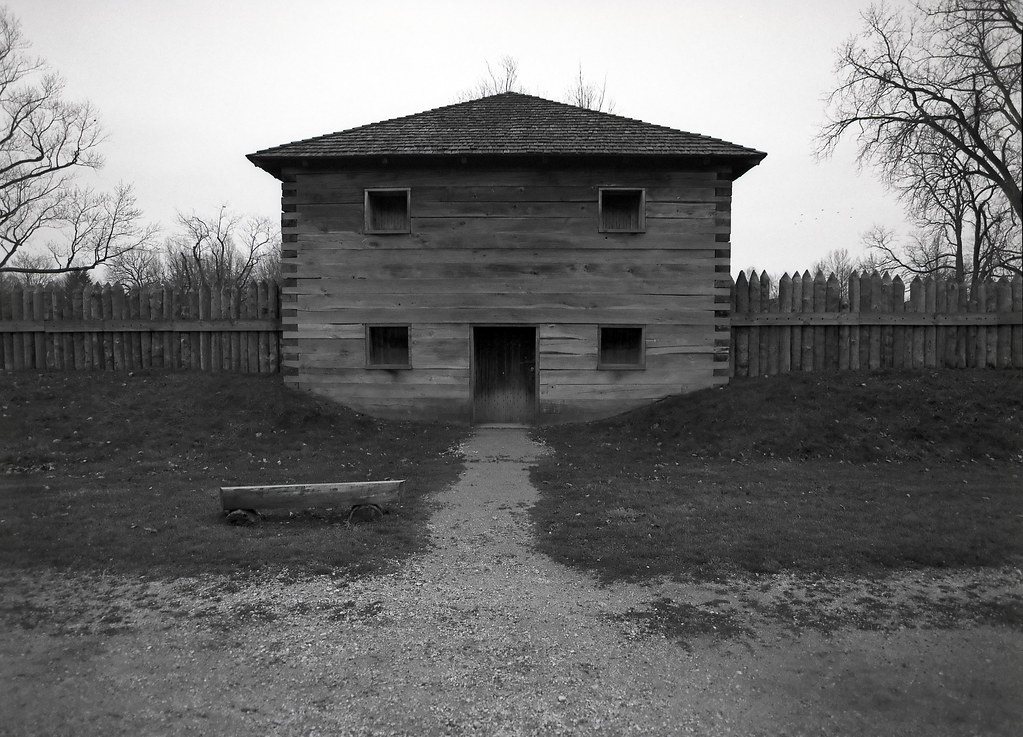
Pentax 645 – SMC Pentax A 645 35mm 1:3.5 – Kodak Tri-X Pan – Kodak HC-110 Dil. B 5:30 @ 20C
The first year of the war had not gone well for the Americans. With the entire plan for a swift victory gone, a new plan was needed. The Battle of Frenchtown resulted in an American defeat, and the British retained their hold on Michigan, but for William Henry Harrison it was simply a minor setback. Rather than risk a confrontation with the British he slowly built up his forces and began to gather his army at the largest of his network of forts, Fort Meigs, located in what is today Perrysburg, Ohio, just south of Toledo. At Fort Detroit, the Shawnee war chief, Tecumseh was not pleased with the cautious nature of the British commander, General Henry Procter. Procter had not done enough, even though he had projected his forces south holding the Americans at bay. Harrison was not moving against him. But for Tecumseh it was a matter of revenge, the two men had been at each other’s throat since the first years of the 19th-Century, and now the two enemies were close enough to meet in battle. Resigned to this native warrior, Procter moved south. While the Americans waited off the Scarborough Bluffs, waiting for their time to jump the small town of York. Procter marched south with a force of British Regulars from the 41st Regiment and Royal Artillery, Provincial Troops from the Royal Newfoundland Regiment, close to 500 Militia troops, but it was the Native Confederacy that made a bulk of Procter’s army with over 1,000 warriors.
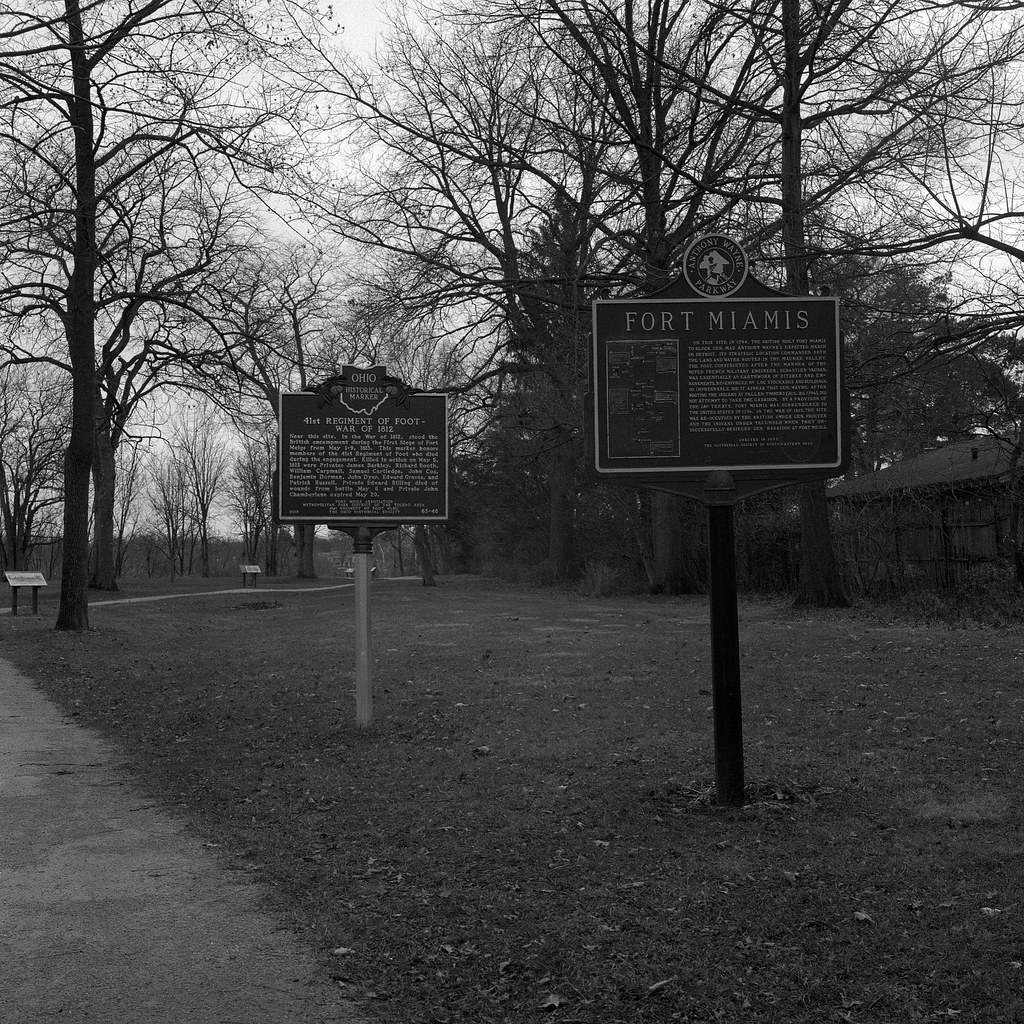
Rolleiflex 2.8F – Carl Zeiss Planar 80mm 1:2.8 – Ilford Delta 400 – Kodak TMax Developer (1+4) 6:30 @ 20C
The spring rains were not kind to the whole operation, but undaunted by weather, the British siege lines opened fire on the American fort on 1 May 1813. Procter had not skimped on artillery bringing two 24-Pound cannons taken from Fort Detroit, several heavy mortars plus smaller artillery pieces arranged in two batteries, one on the North side of the fort separated by the Miami River and a second to the south of the fort. Two guns boats stationed on the Miami River provided additional support. The design of Fort Meigs made it clear that artillery fire would do little to breach the fort’s walls. Unlike an earthwork or masonry fort, Meigs was surrounded by a simple wooden palisade wall with seven blockhouses arranged around it. Two exterior artillery batteries provided firepower towards the northern side of the fort. Harrison upon seeing the British bombardment ordered twelve-foot high earth structures constructed along the interior to provide protection to the massive camp of tents.

Rolleiflex 2.8F – Carl Zeiss Planar 80mm 1:2.8 – Ilford Delta 400 – Kodak TMax Developer (1+4) 6:30 @ 20C
The two sides continued to trade ineffective artillery fire with each other for several days, Procter’s seemingly unlimited supply of artillery ammunition would simply sink into the damp earthen traverses. The British siege did have one effect on the fort, it stopped any convoys from reaching the fort, Harrison would be faced with a finite supply of ammunition for his artillery. Harrison ordered that a bounty is issued for any British fired cannonball that could still be used. Any soldier that brought in a cannon ball would receive an extra ration of whiskey. So the Americans began to fire the British shell back at them. Harrison knew he couldn’t hold up for long without breaking through at least one of the British lines, but any sortie sent from the fort would reduce his overall strength and invite Procter to launch his assault on the fort. But there was a glimmer of hope from the south, reinforcements from Kentucky, led by General Green Clay.
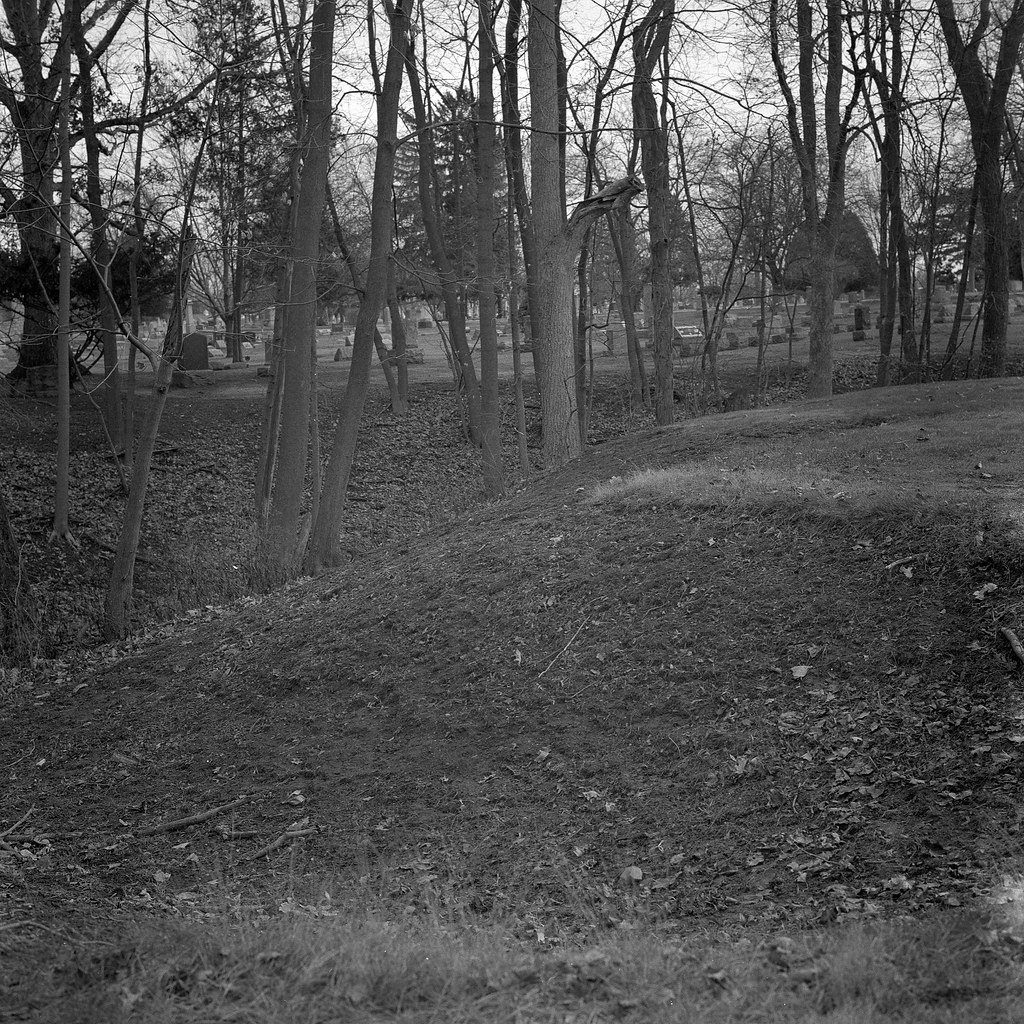
Rolleiflex 2.8F – Carl Zeiss Planar 80mm 1:2.8 – Ilford Delta 400 – Kodak TMax Developer (1+4) 6:30 @ 20C
General Clay was pleased to have arrived when he did and gladly accepted the runner that had been sent by General Harrison. Splitting his force of 1,200 Kentuck Militia into three groups, he ordered one to attack the northern battery while the second attacked in the south. The third group continued onto the fort. The initial attacks against both batteries saw success. Each was guarded by a token force of Militia, natives, and Royal Artillery Gunners. The Kentucky Militia would make quick work of these sending the running into the woods. The quick victory saw the men at the north battery get sloppy. Using only their ramrods to spike the British guns, they wanted to pursue the native troops to exact revenge for the dead Kentuckians from the Battle of Frenchtown. A mistake many would not live to repeat. These woods were home to many of the natives that had come with Procter’s army. Those who were not killed outright were taken prisoner and brought back to Fort Miamis. The troops to the south again set off in pursuit of the native troops, only to meet with a company of troops from the 41st Regiment of Foot that had come to reinforce the southern battery after hearing of the attack. Only 150 men made it back to the Fort.
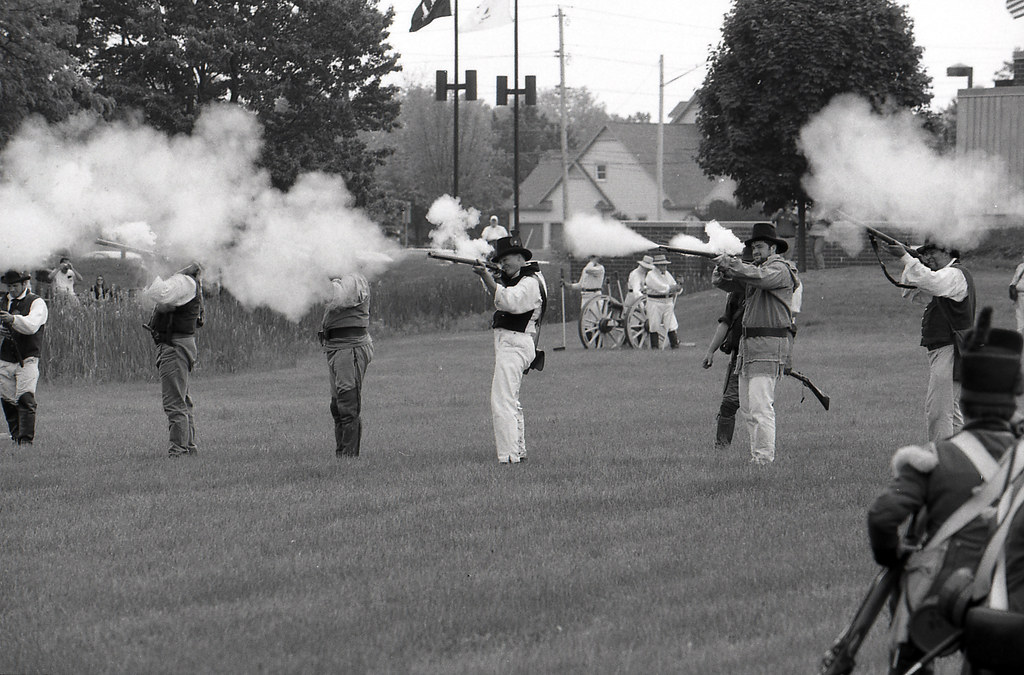
Nikon F4 – AF-S Nikkor 70-200mm 1:2.8G VR – Ilford FP4+ – Processing By Silvano’s
With their batteries quickly returned to action the status quo on the siege lines was returned, but to those taken prisoners the fight was far from over. The animosity between white American settlers and the Native tribes ran deep, and like the violence that followed the Battle of Frenchtown, the headstrong warriors were not about to honour the rules of war. Their anger against the Kentucky men was unstoppable, the officers from the British Indian Department could barely hold the natives in check. Even Tecumseh who was more peacemaker than warrior wept openly at the violence being committed. Turning to Procter, he asked for the British general to intervene and stop this horror. Procter was not Brock and never saw eye-to-eye with Tecumseh, refused to interfere. This put Tecumseh in a rage; the Shawnee Chief declared Procter was no longer fit for command and that he should put on women’s clothing and go home.
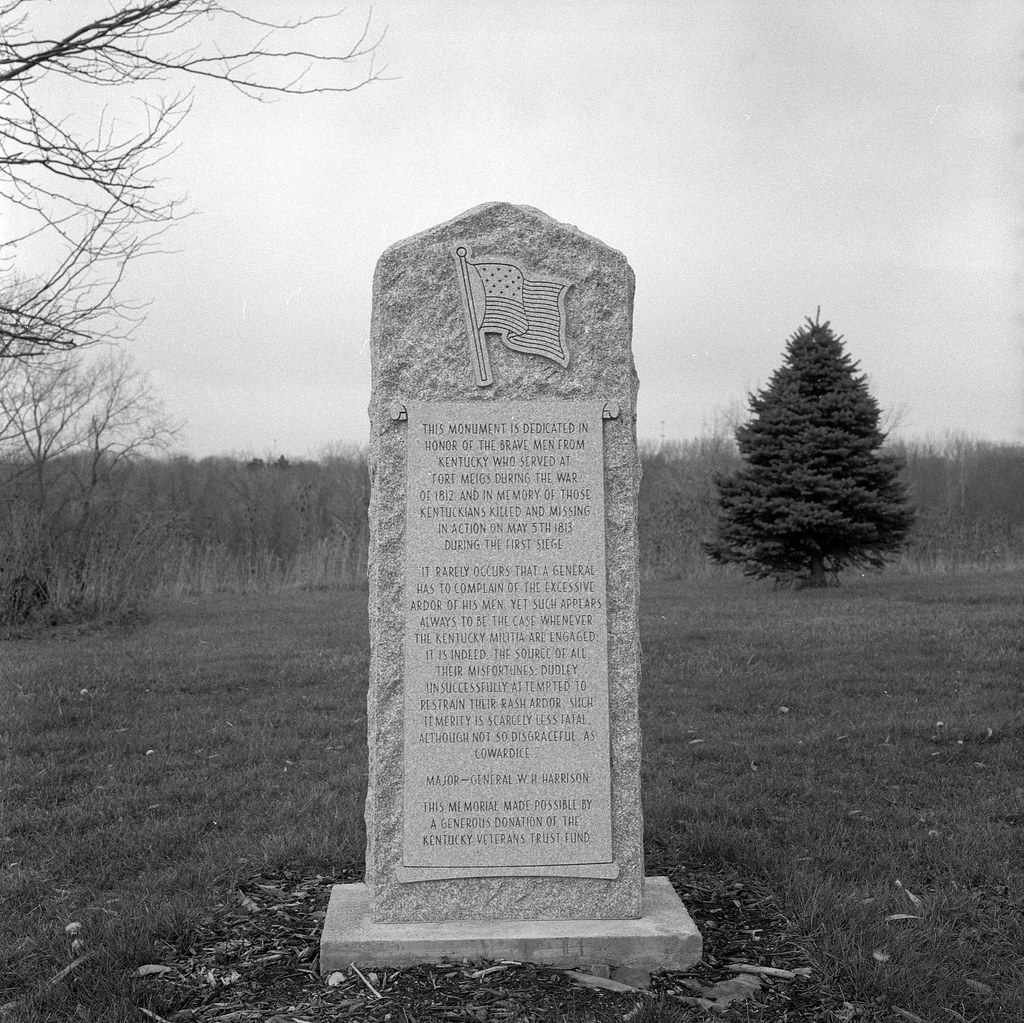
Rolleiflex 2.8F – Carl Zeiss Planar 80mm 1:2.8 – Ilford Delta 400 – Kodak TMax Developer (1+4) 6:30 @ 20C
By 9 May, the two sides had bombarded the other into a stalemate, with spirits and ammunition running low, Procter sent a representative under a flag of truce to the Fort, offering a prisoner exchange with the intention of breaking the siege. The Americans agreed. Procter would return to Detroit with his tail between his legs. He would again be forced into action twice later in 1813 against William Henry Harrison against Fort Meigs and Fort Stephenson; both would further drive the British General into the depths of depression and end with his defeat and dishonourable actions at the Battle of the Thames.
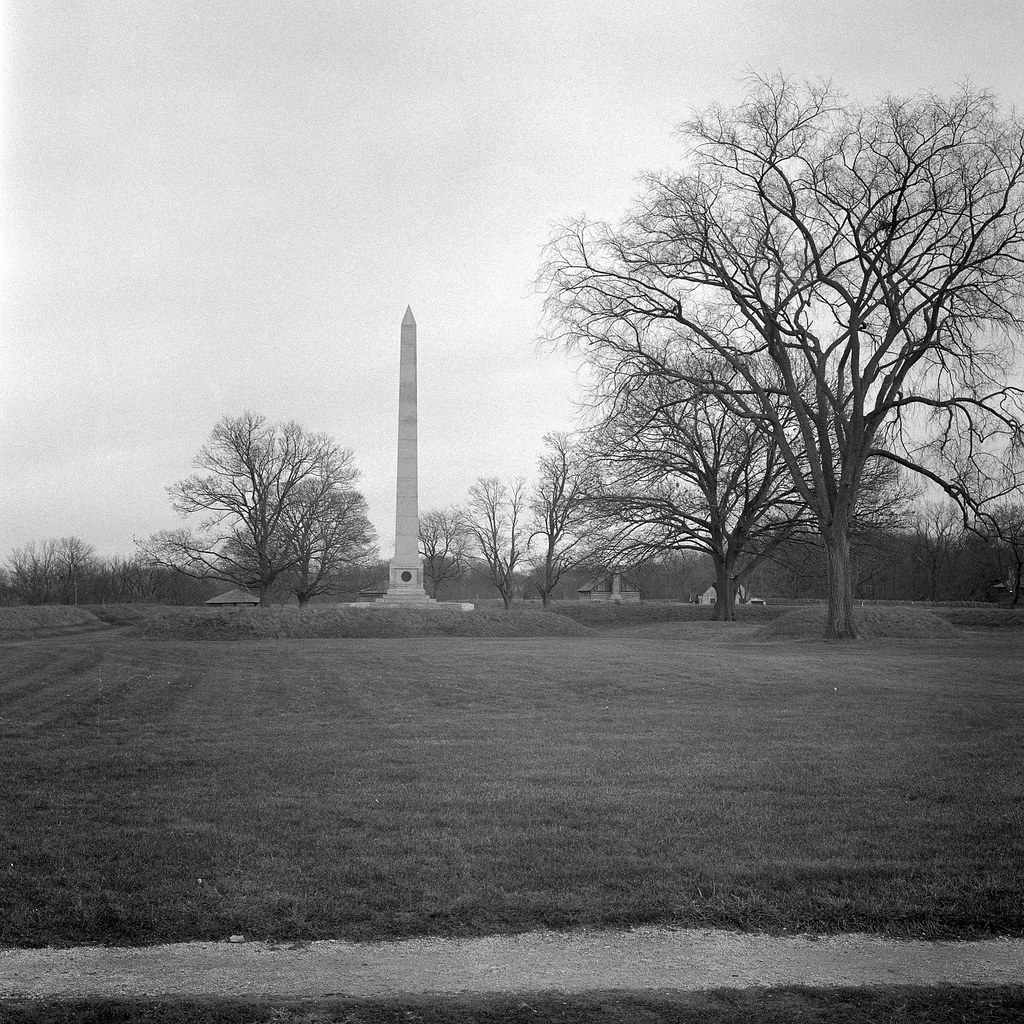
Rolleiflex 2.8F – Carl Zeiss Planar 80mm 1:2.8 – Ilford Delta 400 – Kodak TMax Developer (1+4) 6:30 @ 20C
By the end of the war, Fort Meigs had been reduced to a small depot fort, with only a single blockhouse remaining surrounded by a square palisade. It would burn down shortly after peace was declared. The land would fall into private ownership, but the family realized the historical significance of the space only used it for pasture. And when the last of the family passed away in 1951 the whole area was donated to the state. Since then the site has been operated as a historic site, a 1951 reconstruction of Fort Meigs as it would have stood during the 1813 siege still stands along with a memorial erected by veterans of the American Civil War. Several other buildings and memorials exist within and without the walls. The remains of the British siege batteries can still be seen, in the south, they are a part of a cemetery, in the north, they lay on private property. The remains of Fort Miamis can also be found still today.
Written with files from:
Guidebook to the Historic Sites of the War of 1812 Second Edition by Gilbert Collins – 2006 The Dundurn Group Publishers
Lossing, Benson John. The Pictorial Field-book of the War of 1812. Gretna, LA: Pelican Pub., 2003. Print.
Hickey, Donald R. Don’t Give up the Ship!: Myths of the War of 1812. Urbana: U of Illinois, 2006. Print.
Hickey, Donald R. The War of 1812: A Forgotten Conflict. Urbana: U of Illinois, 1989. Print.
Berton, Pierre. Flames across the Border, 1813-1814. Markham, Ont.: Penguin, 1988. Print.
Web: www.galafilm.com/1812/e/events/ftmeigs.html
Web: war1812.tripod.com/batmeigs.html